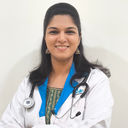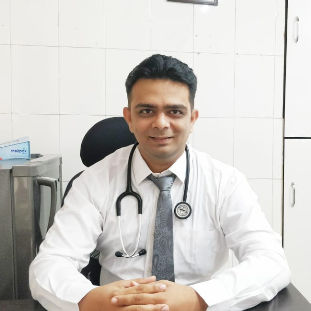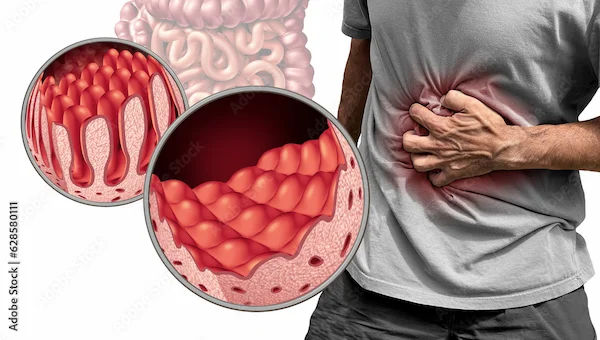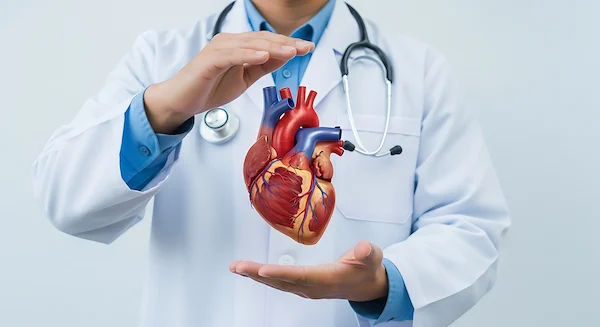Bonexpert: A Parent's Guide to Automated Bone Age Assessment
Discover Bonexpert, the automated bone age assessment tool that helps parents and doctors accurately track a child's growth, understand results, and make informed decisions.

Written by Dr. Siri Nallapu
Reviewed by Dr. Dhankecha Mayank Dineshbhai MBBS
Last updated on 8th Oct, 2025

Introduction
Watching your child grow is a journey filled with milestones. But when a paediatrician expresses concern about their growth pattern—perhaps they are significantly taller or shorter than their peers—it can be a source of anxiety for any parent. This is where understanding your child's skeletal development becomes crucial. Often, doctors recommend a bone age assessment to gain deeper insights. Traditionally, this involved a radiologist manually comparing an X-ray to a standard atlas, a process that could be subjective and time-consuming. Today, technology offers a more precise and consistent solution: Bonexpert. This guide will demystify the Bonexpert system, explaining what it is, how the procedure works, and how it helps doctors accurately evaluate your child's growth potential. We'll walk you through everything you need to know, from the moment the test is recommended to understanding the final report, empowering you to be an informed partner in your child's healthcare journey.
What is Bone Age, and Why Does it Matter?
A child's "bone age" is a measure of their skeletal maturity. It's not the same as their chronological age, which is simply the time elapsed since their birth. Think of it as the biological age of their bones. Assessing bone age provides a unique window into a child's growth status and can predict their future adult height.
The Difference Between Chronological Age and Bone Age
While a child may be 10 years old (chronological age), their bones might have the maturity typical of an 8-year-old or a 12-year-old. This discrepancy is the key piece of information doctors are looking for. A significant difference between the two can indicate an underlying health issue that may need attention. Understanding this difference is fundamental to interpreting bone age X-ray results accurately.
Common Reasons for a Bone Age Assessment
Paediatricians or paediatric endocrinologists typically order a bone age assessment for several reasons:
- Short Stature: To investigate why a child is significantly shorter than average for their age and gender.
- Tall Stature: To evaluate a child who is unusually tall.
- Delayed or Early Puberty: Bone age is closely linked to pubertal development. An assessment can help determine if a child's puberty is progressing normally.
- Monitoring Treatment: For children receiving growth hormone therapy or other treatments for endocrine disorders, serial bone age assessments can track the treatment's effectiveness.
Consult a Paediatrician or Paediatric Endocrinologist for the best advice
Introducing Bonexpert: The Digital Revolution in Radiology
Bonexpert is an advanced software system used globally to automate the process of bone age assessment. Developed by Dr. Hans Henrik Thodberg, it uses sophisticated image processing and artificial intelligence (AI) to analyse a digital X-ray of a child's left hand and wrist, which is the standard region for this test.
How Does the Bonexpert Software Work?
The process is remarkably intelligent. The software automatically identifies 20 key bones in the hand and wrist. It then analyses the shape, density, and development stages of these bones, comparing them to a vast database of reference images. Unlike a human radiologist who might use the Greulich-Pyle atlas method (a visual comparison), Bonexpert employs a more granular approach, similar to the Tanner-Whitehouse method, but with digital precision. It calculates a precise bone age in years and months, along with a standard deviation score (SDS), which indicates how far the result deviates from the average for the child's chronological age and gender.
Bonexpert vs. Traditional Manual Assessment: Key Differences
The primary advantage of Bonexpert is its objectivity and reproducibility.
- Objectivity: Two different radiologists might give slightly different interpretations of the same X-ray. Bonexpert eliminates this inter-observer variability, providing a consistent result every time.
- Speed and Efficiency: The analysis is completed in minutes, freeing up radiologists' time and potentially delivering results faster to the referring doctor.
- Precision: It provides a quantitative score (the SDS), which is more precise than a simple visual estimate and is highly valuable for tracking changes over time.
The Bone Age Assessment Procedure: What to Expect
If your child's doctor has recommended this test, knowing what to expect can ease any apprehension.
Step-by-Step: From the Doctor's Referral to the Report
Follow these steps to understand how your child’s bone age assessment is done:
- Referral: Your paediatrician provides a requisition form for a "left hand X-ray for bone age assessment."
- The X-Ray Appointment: You visit a radiology clinic or hospital department. The procedure is quick and painless. Your child will place their left hand flat on the X-ray plate, and a technician will take a single image. The entire process takes just a few minutes.
- Analysis: The digital X-ray is then processed by the Bonexpert software, often integrated into the clinic's system.
- Verification: A qualified paediatric radiologist reviews and verifies the software's report, ensuring its accuracy and providing a final interpretation.
- Reporting: The final report, which includes the calculated bone age and SDS, is sent to your referring doctor, who will discuss the results with you.
Is the X-Ray Safe for My Child?
This is a common and important concern. The radiation exposure from a hand X-ray is extremely low—one of the lowest doses used in medical imaging. It is equivalent to the natural background radiation we all experience from the environment in just a few days. The benefits of obtaining an accurate diagnosis far outweigh the minimal risks involved.
Interpreting Your Child's Bonexpert Report
Understanding the report can help you have a more productive conversation with your doctor.
Understanding Bone Age (BA) and Chronological Age (CA)
The report will clearly state both ages. A difference of up to one year is generally considered within the normal range. For example, a 10-year-old with a bone age of 9 or 11 would not typically be a cause for alarm.
What is the Bone Age Standard Deviation Score (SDS)?
This is a statistical measure that tells you how significant the difference is. An SDS of 0 means the bone age matches the chronological age perfectly. An SDS of -2 means the bone age is two standard deviations below average (significantly delayed), while an SDS of +2 means it is two standard deviations above average (significantly advanced).
What Does a "Delayed" or "Advanced" Bone Age Mean?
- Delayed Bone Age (BA < CA): This often suggests more growth potential remains. It can be associated with conditions like constitutional growth delay, growth hormone deficiency, or hypothyroidism.
- Advanced Bone Age (BA > CA): This indicates the skeletal bones are maturing faster than expected, which can lead to an earlier closure of growth plates and a shorter final adult height. It can be seen in conditions like obesity, early (precocious) puberty, or excess thyroid hormone.
It's critical to remember that the bone age is just one piece of the puzzle. If your child's results are outside the normal range, consult a paediatric endocrinologist online with Apollo24|7 for further evaluation. They will correlate the findings with your child's growth chart, physical exam, and possibly other tests like blood work (Apollo24|7 offers convenient home collection for tests like thyroid function or IGF-1) to determine the underlying cause.
Benefits and Limitations of the Bonexpert System
While a powerful tool, it's important to understand its scope.
Advantages: Objectivity, Speed, and Standardisation
The core benefits of Bonexpert make it a gold standard in many centres. Its consistency is invaluable for monitoring a child's progress over time, especially when assessing the response to treatment for growth disorders. This high level of standardisation reduces diagnostic uncertainty.
Current Limitations and the Role of the Paediatric Radiologist
Bonexpert is designed for specific populations and conditions. It may be less accurate in children with complex skeletal dysplasias or severe syndromes that affect bone shape. This is why the human expert—the paediatric radiologist—remains essential. They provide the final verification, ensuring the software's analysis is appropriate for the specific clinical context. The technology is an aid, not a replacement, for skilled medical judgment.
Conclusion
Navigating concerns about your child's growth can feel overwhelming, but modern medical technology like the Bonexpert system is designed to provide clarity and confidence. By offering a highly accurate and objective measure of skeletal maturity, it empowers your healthcare team to make better-informed decisions. Understanding what the test entails and how to interpret its findings allows you to be an active participant in your child's care. Remember, a bone age assessment is a diagnostic tool, not a final verdict. If the results indicate a potential issue, it simply opens the door to further investigation and, if necessary, effective management strategies. If your child's condition does not improve after initial assessments, booking a physical visit to a paediatric endocrinologist with Apollo24|7 is the recommended next step to create a comprehensive care plan tailored to your child's unique needs.
Consult a Paediatrician or Paediatric Endocrinologist for the best advice
Consult a Paediatrician or Paediatric Endocrinologist for the best advice

Dr. Guruprasad N
Paediatrician
7 Years • MBBS, MD Peadiatrics, DNB pediatrics
Bangalore
Apollo Clinic Bellandur, Bangalore

Dr. Saheli Dasgupta
Paediatrician
11 Years • MBBS, MD (Paediatrics), Indian Diploma of Paediatric Critical Care Medicine
Kolkata
Sristi Polyclinic, Kolkata

Dr Sharvari Kulkarni
Paediatrician
5 Years • MBBS, MD PEDIATRICS
Pune
Apollo Clinic, Viman Nagar, Pune
Dr. J N V. Bhuvaneswararao
Paediatrician
24 Years • MBBS,Diploma in Child Health
Vijayawada
SRI SRINIVASA CHILDRENS HOSPITAL, Vijayawada

Dr. Vishal Parmar
Paediatrician
11 Years • MBBS, DCH, MRCPCH UK, Fellowship in Neonatal Medicine
Mumbai
Shri Hari Child Clinic, Mumbai
Consult a Paediatrician or Paediatric Endocrinologist for the best advice

Dr. Guruprasad N
Paediatrician
7 Years • MBBS, MD Peadiatrics, DNB pediatrics
Bangalore
Apollo Clinic Bellandur, Bangalore

Dr. Saheli Dasgupta
Paediatrician
11 Years • MBBS, MD (Paediatrics), Indian Diploma of Paediatric Critical Care Medicine
Kolkata
Sristi Polyclinic, Kolkata

Dr Sharvari Kulkarni
Paediatrician
5 Years • MBBS, MD PEDIATRICS
Pune
Apollo Clinic, Viman Nagar, Pune
Dr. J N V. Bhuvaneswararao
Paediatrician
24 Years • MBBS,Diploma in Child Health
Vijayawada
SRI SRINIVASA CHILDRENS HOSPITAL, Vijayawada

Dr. Vishal Parmar
Paediatrician
11 Years • MBBS, DCH, MRCPCH UK, Fellowship in Neonatal Medicine
Mumbai
Shri Hari Child Clinic, Mumbai
More articles from General Medical Consultation
Frequently Asked Questions
How accurate is the Bonexpert bone age assessment?
Bonexpert is considered highly accurate and is validated against the traditional Greulich-Pyle and Tanner-Whitehouse methods. Its main advantage is superior reproducibility, meaning it will produce the same result for the same X-ray every time, eliminating human subjectivity.
Can Bonexpert be used for children of all ages?
The software is primarily designed and validated for children and adolescents, typically from around 2.5 to 17 years of age for girls and 2.5 to 19 years for boys. Its accuracy is highest within this range for standard bone age assessment for growth hormone deficiency and other common conditions.
What causes a bone age to be delayed?
Common causes of a bone age delay include constitutional growth delay (a normal variant where a child is a 'late bloomer'), growth hormone deficiency, hypothyroidism, and chronic illnesses affecting nutrition. A paediatric endocrinologist can help determine the specific cause.
Does an advanced bone age always mean my child will stop growing sooner?
Generally, yes. An advanced bone age suggests the growth plates are maturing faster, which typically means they will fuse earlier, leaving less time for overall growth. However, the final adult height prediction depends on both the bone age and the child's current height.
How often should a bone age test be repeated?
This depends entirely on the medical reason for the test. For monitoring treatment, such as growth hormone therapy, it might be repeated annually. For a one-time diagnostic evaluation, a single test may be sufficient. Your doctor will recommend the appropriate follow-up schedule.




.webp)